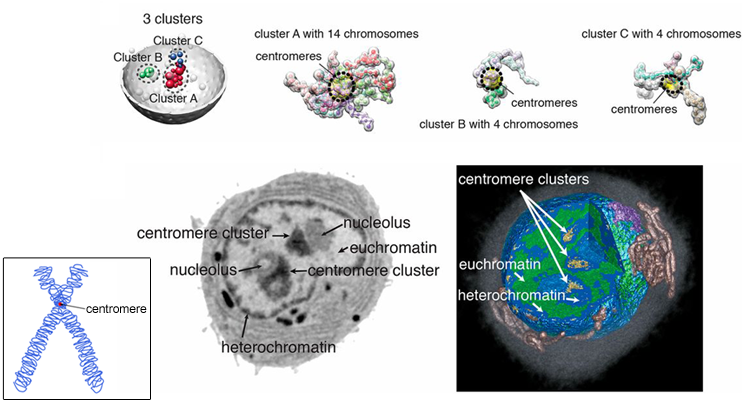Department of Energy facilities such as the Joint Genome Institute provide us with DNA sequences for entire genomes, most famously the human genome. However, a DNA sequence alone isn’t sufficient to determine how a gene will function in a cell, or if indeed it will be functional at all. We also need to know the spatial 3D arrangement of the genome in the nucleus. A single strand of DNA, about two meters long, must be tightly packed into the nucleus of a cell, which is only around six micrometers in diameter. Thus, bits of DNA that may be very distant in linear sequence may actually be in close proximity in a living cell. This “topological” proximity can have functional implications, in terms of gene expression, replication, and repair, and thus has profound implications for human health and the treatment of genetic disorders and diseases.
Researchers have now made a significant advance in determining the 3D organization of genomes by combining modeling and probabilistic calculations with minimally perturbing imaging techniques. At ALS Beamline 2.1, Tjong et al. used cryogenic light microscopy and soft x-ray tomography, a combination not available at any other synchrotron facility, to confirm the presence, predicted by the model, of centromere clusters in a cell nucleus (centromeres are the central part of a chromosome where the two “arms” are joined). The models reproduce structural properties remarkably well, even those that were not included as input constraints and were not readily observable in the original biochemical data. The experimentally validated, predictive models described in this paper can be used to answer fundamental questions, such as how the genome architecture differs in different types of cell within the same organism.

Work performed at ALS Beamline 2.1.
H. Tjong, W. Li, R. Kalhor, C. Dai, S. Hao, K. Gong, Y. Zhou, H. Li, X. Zhou, M.A. Le Gros, C. Larabell, L. Chen, and Frank Alber, “Population-based 3D genome structure analysis reveals driving forces in spatial genome organization,” PNAS 113, E1663 (2016).